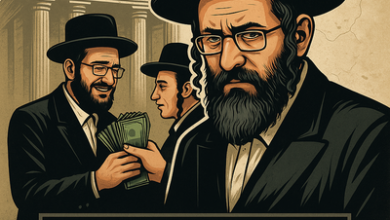
(RNS) — “Jeff, lighten up.”
I can imagine someone saying that to me. With all the darkness that has invaded the world — the assassinations of terrorist leaders, the American political situation — such an admonition would be welcome.
Which is precisely why I visited one of my favorite spots in the Berkshires: The Norman Rockwell Museum. I have been there many times, always enjoying the Norman Rockwell illustrations and “Saturday Evening Post” covers, always appreciating the subtle and often undetected artistry in his work and enjoying a diversionary excursion into a vanished America.
But the other day, my visit was like running into an old friend whom I hadn’t seen in almost 60 years.
I am referring to their current exhibit: “What, Me Worry? The Art and Humor of MAD Magazine.”
“Mad” magazine was an essential part of my childhood and early adolescence. For some reason, my parents thought it was far more acceptable than my previous steady diet of “Superman” and “Batman” comics.
If they had only known what they were helping to facilitate. I was already developing a reputation for being, if not the class clown, then at least the class comedian (no, I was not the class Reform rabbi).
“Mad” was my tutor in that endeavor. It was “Mad” that first taught me life could be funny — even absurd.
For several hours at the Rockwell, I strolled through my childhood, occasionally bumping into Mad bits that I had laughed at more than half a century ago and going through those old lessons in pre-adolescent snark.
- “Spy vs. Spy” was a playful, silent introduction to the Cold War (along with Boris and Natasha from “Rocky and Bullwinkle”).
- Dave Berg’s “Lighter Side of…” introduced me to the small absurdities of life (and when his daughter attended my college, and I met him on the first day of the semester, it was one of the most memorable days of my youth).
- Don Martin’s cartoons were a little sadistic. In one case, they influenced my interpretation of Jewish history. Once, on Hanukkah, I told my sons about the heroic martyrdom of Eleazar Maccabee, who died in a kamikaze-like attack on a Syrian general who was riding an elephant. Eleazar ran beneath the elephant, eviscerating the poor animal with a sword — only to be crushed to death beneath its weight. I told them this was the origin of the traditional latke, which resembled the hapless Eleazar. Yes, I was channeling Don Martin. (They lovingly admonished me to never, ever tell that story to anyone else. Like religious school kids. They were worried it would adversely affect my career. I never told that story to religious school kids. OK, once.)
- And the fold in, which was instituted in 1964 (happy 60th birthday to an American institution). You could fold the inside back cover and come up with an entirely new illustration. My parents thought this was one of the most clever things they had ever experienced.
And then, of course, there were the satires on movies and television shows. Those satires would introduce me to the whole idea of satire and parody. More than that: They confirmed in me the notion that much of what the entertainment industry was handing us was, frankly, stupid.
(A memory of how this influenced me: I was in sixth grade in religious school. We were studying Jewish history. There was a workbook that accompanied the textbook. I added my own captions and cartoon balloons to it. My religious school teacher confiscated it. He sent me to the principal’s office. Let’s just say I do not normally put that incident on my CV.)
But, what grabbed me at the exhibit was the utter Jewishness of the “Mad” enterprise. So many of the editors and writers were Jewish: Bill Gaines, Mort Drucker, Harvey Kurtzman, Al Jaffee, Will Elder, Dave Berg. (No, no women. Sadly. They missed the opportunity with Roz Chast.)
There were several moments of Jewish-themed stuff in “Mad.”
There was the Israeli edition of “Mad.” The cover, designed by Michael Kichka, featured the iconic figure of Alfred E. Newman, but this time, as a parody of the macho Israeli.

There was the way that “Mad” re-imagined “Fiddler on the Roof.”

That became the parody, “Antenna on the Roof.”
It was more than a parody; it was a piece of American Jewish social commentary. It suggested the world of “Fiddler” had transformed itself into a world of bourgeois acceptability (and if you were paying attention, you could see an homage to that satire in the Coen Brothers’ “A Serious Man,” with Larry on the roof, fixing the antenna).
“Mad” magazine was a piece of modern, secular Jewish literature — almost up there with Philip Roth. Its spirit survives in such writers as Shalom Auslander, who brings his own sardonic vision into his writing. It survived in numerous cultural inheritors, such as the movie “Airplane” and any number of very silly movies and television shows.
Let’s go back to Alfred E. Newman. The exhibit engages in a wonderful archeological dig into his character’s backstory, showing his visage was part of American culture decades before the creation of “Mad.”
What was Alfred E. Newman’s ever-present catch phrase? “What, me worry?”
I keep thinking about Al Vorspan’s old quip about the Jews: “Start worrying. Details to follow.”
That is how it is with us, and we need not even wait for the details. Jews (and others) have plenty to worry about. We worry about the fallout from the recent assassinations of terrorists. We worry about the possibility of a wider regional war in the Middle East. We worry, as we always do, about issues surrounding Jewish identity in the United States.
And yet, even I needed a small respite from such worry.
To laugh again.
And to remember what it was like when I first learned to laugh at the world and at myself.
Thank you, “Mad,” for being my teacher.
Source link




